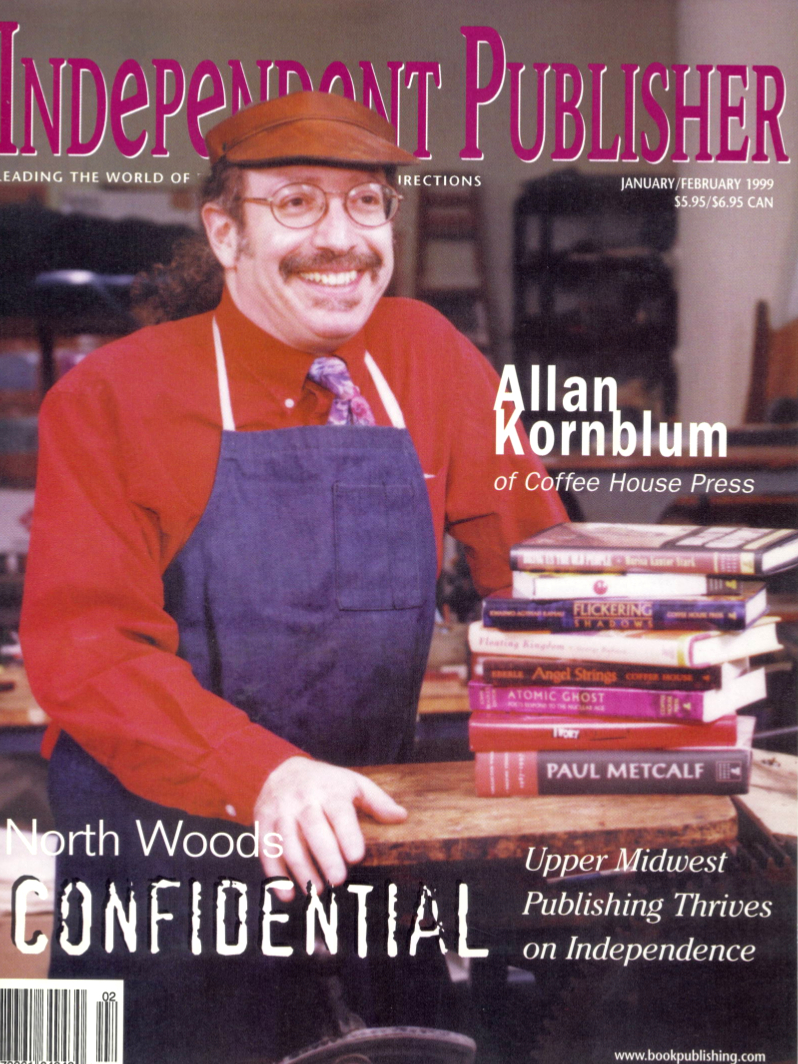A HISTORY OF THE IPPY AWARDS

The IPPY Awards were founded in 1996 with the goal of recognizing and promoting independently published books. For the past twenty five-plus years, that goal has remained intact - despite changes in our means and methods, despite radical changes in the publishing industry, despite changes to our entrant base - we are still hustling and working to promote the year’s best independently published books. Going back to our awards mission statement and guidelines, here’s why we do it: “To recognize the deserving but often unsung titles published by independent authors and publishers, and bring them to the attention of booksellers, buyers, librarians, and book lovers around the world.”
Yet things have changed in the publishing industry. As the inaugural IPPY contest was accepting entries, small presses struggled to get any media coverage, and self-publishing consisted of a few visionary authors and “vanity” presses. Today, indie publishers continue to find new ways to thrive and create, while self-publishing has exploded in an unprecedented way. This explosion has brought on an onslaught of services aimed at self-publishers, from production and design services to marketing packages and new awards contests. Some are offered by supportive organizations, but some are perceived as borderline exploitative. In all the noise surrounding this booming industry, we want to reiterate our history and purpose.
ON THE GROWTH OF THE IPPYS
 Our awards were started back in 1996 when Small Press (the original name of Independent Publisher) was hearing a lot of criticism lobbed at major book awards contests and was encouraged to produce its own “best of the year” list. This made sense, as we were one of the only voices encouraging indie presses at the time (the Jan-Feb 1996 issue contained over 100 reviews of indie press books!), and one of the few places where indie books were getting any coverage. Thankfully, today, indies are far better represented and are occasionally even covered by mainstream, but that wasn’t always the case. Much like today, the famous awards and year-end “best of” lists recognized the same ten bestsellers/most marketed books by the large publishing houses.These lists were - and still are - useful and beloved in many ways, but by their nature are exclusive and limited in scope. Where was the love for the most creative but perhaps not as mainstream book? Or recognition for quality books about important topics from nontraditional publishers? There was an absence of recognition for indie publishers, who wanted to be lauded for successful “niche publishing” and awarded in their own industry among their peers. As the natural fit, Independent Publisher stepped in to fill this role.
Our awards were started back in 1996 when Small Press (the original name of Independent Publisher) was hearing a lot of criticism lobbed at major book awards contests and was encouraged to produce its own “best of the year” list. This made sense, as we were one of the only voices encouraging indie presses at the time (the Jan-Feb 1996 issue contained over 100 reviews of indie press books!), and one of the few places where indie books were getting any coverage. Thankfully, today, indies are far better represented and are occasionally even covered by mainstream, but that wasn’t always the case. Much like today, the famous awards and year-end “best of” lists recognized the same ten bestsellers/most marketed books by the large publishing houses.These lists were - and still are - useful and beloved in many ways, but by their nature are exclusive and limited in scope. Where was the love for the most creative but perhaps not as mainstream book? Or recognition for quality books about important topics from nontraditional publishers? There was an absence of recognition for indie publishers, who wanted to be lauded for successful “niche publishing” and awarded in their own industry among their peers. As the natural fit, Independent Publisher stepped in to fill this role.
We started by recognizing books in the number of categories that made the most sense based on the number of entries (325 in that first year) and based on a judge’s perspective. As the judges quickly discovered, if you don’t have enough suitable categories, you end up having to make impossible decisions, like deciding whether a meaningful but concise children’s book should receive lower points in the “content” criterion as opposed to a thoroughly researched history of diseases. In our inaugural contest, with the number and nature of our initial entrants, this translated to 20 some categories.

Over the years, however, as the number of entrants grew, certain categories became unwieldy, and judges often argued that the only fair way to resolve the rankings was to split the category up. For example, consider the Fiction category. Judges had to consider a fast-paced, action-packed but cleanly resolved thriller with a slow-moving but poignant lyrical novel reflecting on grief. In some cases, the disparity between the books made it almost possible to consider them in the same category - a fact that many entrants were quick to point out. And since we were never trying to replicate a pared-down ten-category awards program like the National Book Awards, but rather to provide indie publishers a chance to be recognized for their work in a relevant category among their peers, expanding the categories became the natural answer. As a result of 20 years of feedback from entrants and judges, our contest grew to the whopping 80-plus subject categories we have today.

It may seem counterintuitive to award 400 medalists a year in a best-of competition. Yet when your entry pool is 5,000 entries from scores of amazing authors and publishers, whittling that number down to 400 is darn near impossible. And when your entrants range from a chapbook of poetry to a five volume history of World War I, you come to see the necessity of awarding people in their specific genre or field to truly reward their accomplishments. We’ve been gratified to find that the number of medalists does not detract from the meaning of the award, as the ceremonies we host every year at BookExpo attract more winners eager to celebrate their recognition among their peers. And, if our talented entrants continue to expand the range of their creativity in the coming years, inventing and submitting new genres of books (looking at you, coloring books), we will continue to evolve to best recognize their work.
